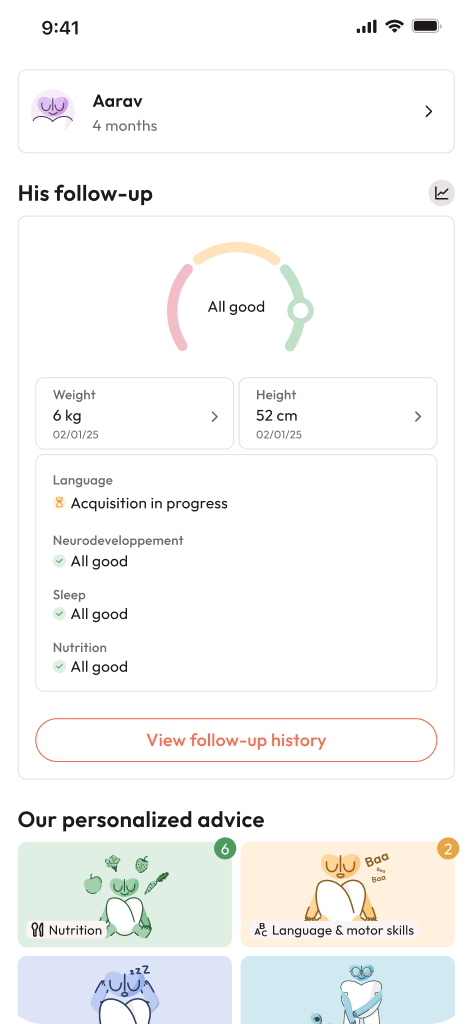Pregnancy brings a symphony of changes—a belly gently arching forward, dreams cradled with every heartbeat, and sometimes, an unexpected guest: sciatica during pregnancy. That tell-tale jolt—a flash of discomfort darting from the lower back down one leg—may leave parents wondering if mobility and comfort must take a back seat for the months ahead. Is it simply another passing ache, or does it warrant closer attention? Let’s unravel the realities behind sciatica during pregnancy, examining the triggers, the symptoms, and the best ways to reclaim ease and confidence, step by step. Gentle prevention, practical relief, medical science—your toolkit for this journey is vast.
What is sciatica during pregnancy and how does it happen?
Sciatica during pregnancy stems from the disturbance of the sciatic nerve—the body’s longest, thickest nerve spanning from the lower back through the buttocks and trailing down the leg. Imagine: as the uterus grows week by week, gentle hormonal shifts (especially relaxin and progesterone) make ligaments looser to prepare for childbirth, but this very flexibility brings instability in the pelvic and sacroiliac joints. These regions, now mobile, can inflame or place extra strain on the neighbouring nerve fibres.
What causes this chain reaction? Several players are at work:
- Weight gain and fluid retention combine to squeeze tissues in the lower spine.
- The uterus and baby, pressing softly but insistently, narrow nerve passageways—particularly in the later months.
- Subtle (and sometimes not-so-subtle) posture adaptations occur: a deepening arch in the lumbar back, buttocks muscles tightening, the classic pregnancy waddle.
- The centre of gravity shifts, asking previously relaxed muscles to overcompensate.
A key point: a herniated (slipped) disc is an uncommon culprit during pregnancy. Most often, discomfort results from the marriage of tissue laxity and shifting mechanical pressures.
Just how common is sciatica during pregnancy?
A staggering 80% of pregnant women will know back pain in some form. Yet true sciatica during pregnancy—pain shooting like electricity and dancing all the way down the leg—touches fewer, though still a notable 20% to 50% as pregnancy progresses, especially in the latter two trimesters. Not every twinge in the lower spine is sciatica, but the experience is far from rare.
Sciatica or just pregnancy backache? Knowing the difference
A dull, pulsing ache in the lower back belongs to everyday pregnancy discomforts. Sciatica, though, sings a different tune: sharp, burning, sometimes streaking from buttock to toe, with tingling or numbness (that odd “pins and needles” sensation), and sometimes even weakness along its path. If pain stops at the thigh or never reaches the toes, some call this a “truncated sciatica”—still disruptive, but slightly different.
Muscle tension alone usually avoids these nerve symptoms; neurological features, such as difficulty lifting the foot, set sciatica apart.
What triggers sciatica during pregnancy?
Hormonal tides and hypermobile joints
When relaxin and progesterone flood the bloodstream, joints and ligaments soften and stretch—nature’s preparation for childbirth. Yet, this flexibility, designed to aid delivery, may also loosen connections in the pelvis and lumbar spine, leaving joints unsteady, vulnerable to micro-movements and slight inflammation. These slipstreams of instability may nudge or irritate the sciatic nerve.
Mechanical pressure: Uterus, baby, and swelling
As weeks go by, the expanding uterus isn’t just a testament to new life—it’s a driver of increasing force upon pelvic nerves and blood vessels. Edema or swelling, a familiar companion for many, adds to internal pressures. Physical architecture shifts, asking more from already strained tissues.
Postural changes: The shifting silhouette
That gentle pregnancy sway, with an accentuated lower back and protruding abdomen, is more than a posture—it’s a biomechanical adaptation. Muscles, from lumbar extensors to the deep stabilisers of the pelvis, toil overtime to maintain balance. Sitting for hours, standing too long, or sudden turns can all exacerbate sciatica during pregnancy.
Pre-existing risk factors
Already faced similar pain before pregnancy? Known as multiparity (having delivered previously), higher body mass, a sedentary lifestyle, or prior spinal conditions can increase the odds, but the main triggers remain hormonal and mechanical.
Symptoms: Decoding the language of sciatica during pregnancy
Sciatica during pregnancy doesn’t always play by the rules. Watch for:
- Sharp, shooting, or burning pain beginning in the lower back or buttock, radiating down—sometimes reaching the foot, sometimes pausing at the thigh.
- Tingling or numbness, that odd “pins and needles” shuffle, along the nerve’s course.
- Muscle weakness—an unsteady step, difficulty rising from a chair, or hesitancy climbing stairs.
- Worsening symptoms with certain activities: sitting, standing, walking, or lying in specific positions.
Occasionally, discomfort lingers just in the buttock, heightened by sitting or direct pressure. Here, piriformis muscle irritation may masquerade as sciatica—a subtle difference but useful for medical discussion.
When is urgent care needed?
Some symptoms demand swift medical attention:
- Sudden or intensifying pain that refuses to settle with rest.
- Weakness in one or both legs, especially if new.
- Loss of bladder or bowel control or numbness around the perineum.
- Difficulty moving a leg or standing.
Such signs may hint at significant nerve compression and warrant assessment without delay.
Diagnosing sciatica during pregnancy: Observation and clinical skill
Diagnosis leans on attentive listening and well-chosen physical tests. Your health provider might ask about pain pattern, regions affected, and factors that escalate or ease discomfort. Typical steps include:
- Testing range of motion (does bending forward set off pain?).
- Conducting the straight-leg-raise test—a classic check for nerve tension.
- Differentiating between muscle strain and nerve involvement.
Imaging, notably MRI, enters the stage only for exceptional circumstances (severe or unusual symptoms), always considering fetal safety. X-rays or CT scans generally step aside, avoided for their risks.
Prevention: Small choices, long-term comfort
Simple, day-to-day shifts can build a defence against sciatica during pregnancy:
- Prioritise posture: Keep the spine upright, both feet anchored, and avoid crossing legs. Pillows or rolls behind the lower back transform comfort.
- Sleep positions matter: A firm, yet yielding mattress; pillows between the knees and beneath the belly. A supportive cocoon, night after night.
- Move often: Avoid long periods of sitting or standing; take gentle breaks to walk, stretch, or sway.
- Footwear counts: Supportive flat shoes trump high heels or anything tight—comfort before fashion.
- Active habits: Swimming, prenatal yoga, and walks keep joints flexible and spirits elevated.
- Pregnancy support tools: Pelvic belts, birth balls, and maternity pillows lighten the load on spine and pelvis.
- Eat and drink wisely: Good hydration, balanced diets, and moderated salt intake help curb swelling.
Exercises: Gentle movement for powerful relief
Stay in motion—gently, comfortingly. Favourites for sciatica during pregnancy include:
- Piriformis stretch: Sitting, cross ankle to knee, push gently till a soothing stretch embraces the buttock.
- Cat-cow pose: On all fours, breathe into a deep arch, exhale into a curve—a rhythm for release.
- Modified pigeon pose: From hands/knees, slide knee forward, extend the other back. Sink only as far as comfort allows.
- Butterfly stretch: Feet together, knees open, leaning forward with a straight back—hips and lower back rejoice.
- Slow walks and pregnancy ball exercises—gentle, restoring, never forced.
Pause any exercise at the first sign of discomfort and seek professional guidance for tailored routines.
Multimodal relief: More than one solution
Pain interrupts routines, sleep, plans. Yet, a blend of strategies can regain control:
- Paracetamol (acetaminophen): Often the first option—effective, widely studied, but always taken under advice.
- Physical therapy: A physiotherapist experienced in pregnancy offers stretches, posture correction, and pelvic floor training.
- Prenatal massage, osteopathy, chiropractic care: Qualified practitioners, skilled in maternity care, use non-invasive, hands-on techniques for relief.
- Local warmth: Heated compresses and gentle showers relax tense muscles, often soothing pain rapidly.
- Pregnancy accessories: Pelvic belts, supportive pillows, and good chairs foster ongoing comfort.
- Daily gentle activities: Yoga, light pilates, and swimming—not just for physical health, but to nurture mental resilience and emotional stability.
Living daily life: Comfort, confidence, and adaptation
Errands, short walks, turning in bed—each can become a moment of calculation with sciatica during pregnancy. How to adapt? Listen to the body’s signals, breaking tasks into smaller steps and pausing without guilt. Ergonomic adjustments—firm chairs, lumbar supports, footrests—transform daily life. Nurture both activity and rest, holding firmly to optimism and readiness to seek solutions.
Support, guidance, and reassurance are key. If pain intensifies, limits function, or steals precious sleep, it’s wise to connect with a caregiver or physical therapist. Early recommendations may include adjusted routines, temporary leave from work, or new home strategies for comfort—all with your and your developing baby’s well-being at the centre.
When to seek immediate specialist support?
- Sharp pain, unrelieved by comfort measures.
- Fast-growing weakness or loss of mobility.
- Loss of bladder/bowel control or numbness in private areas.
Safe outcomes depend upon rapid, expert attention.
Sciatica during pregnancy, baby safety, and what to expect at delivery
Despite its impact on daily comfort and mobility, sciatica during pregnancy does not threaten the baby’s development or the safety of delivery. It is not a warning sign of premature labour—a relief for many. Nearly always, as hormones ebb and the uterus shrinks, sciatica during pregnancy fades naturally after birth.
Recovery after childbirth: Moving forward
For most, removal of pregnancy’s physical demands brings rapid improvement—sometimes within days. A few may notice persistent aches if recovery is rushed or inflammation lingers, but with progressive return to exercise and support from physical therapy, resilience is typically restored. Warning: pain persisting for months warrants a review—to rule out other causes or receive refined care.
Key Takeaways
- Sciatica during pregnancy may be common—particularly in the second and third trimesters—but it most often settles naturally after birth.
- The blend of hormonal changes, extra weight, shifting posture, and pre-existing back problems creates a fertile ground for nerve irritation.
- Effective prevention includes good posture, daily activity, tailored support items, and mindful movement.
- Relief rests on multiple pillars: paracetamol, physical therapy, gentle stretches, warm compresses, professional hands-on care, and adapted daily tasks.
- Complications are rare. However, sudden weakness, severe pain, or changes in bladder or bowel function demand urgent medical evaluation.
- Confidence, understanding, and collaboration with healthcare professionals empower families to meet pregnancy’s challenges head-on, with reassurance and knowledge as guides.
- For tailored, science-based advice and convenient access to health questionnaires for your child, try the application Heloa—a trusted resource for proactive parent support.
Questions Parents Ask
Can sciatica during pregnancy cause any long-term problems?
In nearly every scenario, the nerve discomfort and pain connected to sciatica during pregnancy disappears after childbirth, as hormones balance and pressure on the sciatic nerve eases. Lasting numbness or continuing weakness is rare but should be shown to a healthcare provider to check for other causes and to guide recovery—many solutions exist to regain full comfort and mobility.
Are massages safe for relief of sciatica during pregnancy symptoms?
Gentle massage, either at home or by a trained professional familiar with pregnancy care, can help relax tension in the lower back or buttocks. Simple techniques—long strokes, light circles—should avoid deep, firm pressure on sensitive zones. A steady, nurturing approach aims to ease muscle tension and bring needed comfort, but it is wise to discuss any persistent pain with your doctor.
Do sciatica symptoms usually worsen at night?
Frequently, yes. Shifting posture or pregnancy pillows at night may compress or stretch the sciatic nerve, leading to more pronounced tingling, aches, or numbness as the day ends. Experimenting with pillow placement between the knees, different side-lying positions, or a warm shower before bed can bring relief. Adjustments for better sleep are valuable, with each small change contributing to better nights.









